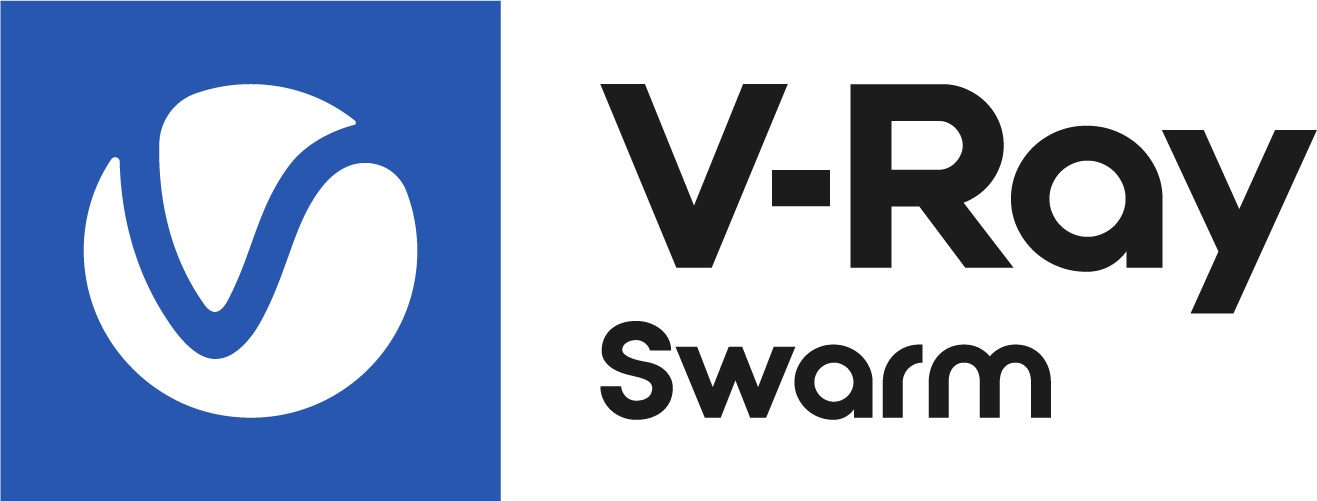This page provides information on the Configuration options of the V-Ray Swarm distributed rendering service.
Overview
The V-Ray Swarm configuration interface allows you to create and track Tags for your render nodes, set utilization rules for the rendering machine, change the server port and number of threads you use, set up a custom license configuration, and use environment variables.
Configuration Interface
Select the Configuration from the V-Ray Swarm Menu to access the options, or go directly to http://localhost:1113/configuration. Please note that making any changes to the Configuration page requires V-Ray to be disabled before those changes take effect. Once you disable it from the Disable button in the top right corner of the page, the options become available.
Tags
Tags create groups of render node machines that can be used for job rendering. Tags appear in the 3D application's V-Ray Settings interface. Assign single or multiple tags to a render job. All the render node machines that have at least one of the selected tags will then be used.
Note that if no tags are selected, all discoverable machines are used.
All nodes that have at least one NVIDIA RTX graphics card are assigned with the re:rtx tag.
Tags can be descriptive labels such as RenderFarm, Workstation or 5th_floor. They can contain only alphanumeric characters, spaces, and dashes.
Use Dynamic tags to select specific machines during the rendering session. Dynamic tags are automatically detected by Swarm and are valid for the current machine.
Worker
This section provides machine availability settings. If any of the conditions are met, the node is listed as Unavailable in the Worker column on the Network page.
Install script
Swarm can provide the required V-Ray build version upon a DR render server machine. If a script is specified it will be run after the installation, before marking the machine as ready to join the DR session.
Network Discovery
V-Ray Swarm communicates using Multicast and TCP/UDP protocols. When auto-discovery is enabled, all machines use multicast address 239.242.6.10 to discover each other.
This section provides a field for manually adding IPs. This is useful if you are outside the office and use a VPN connection to the cluster that doesn’t support multicast.
V-Ray
The first option under V-Ray configuration is Disable GPU rendering. It allows V-Ray Swarm to be configured as a node without GPU. Thus it won't appear in the discovery process. This option is very useful when a V-Ray Swarm node is used as a desktop computer. In order to have good UI performance, the administrator of the machine can set Disable GPU rendering to true and the machine does not emerge in the discovery process of GPU-related jobs.
The second option under V-Ray configuration is the V-Ray server port that V-Ray Standalone runs on. The default port is set to 20212. If needed, it can be changed. Please note that the new port needs to be allowed to pass through the local machine's firewall.
The third option here is Number of threads. Use the slider to select how many CPU cores are used for rendering. This option is set to Use all cores for rendering by default.
License
Rendering with V-Ray Swarm requires V-Ray Render Node license. Configure the IP address/port of the machine where V-Ray license server is running from the Installation Licensing screen.
By default, the Use system license configuration option is enabled, which uses the existing V-Ray license configuration from previously installed V-Ray products on the machine.
Disabling Use system license configuration provides options for setting a custom configuration, which is used only by V-Ray Swarm. Note that this doesn't overwrite the system configuration if there is one, but creates a new one for V-Ray Swarm. Use this option if you want to change V-Ray license settings, or if you do not have any V-Ray products installed on the machine. Choose three machines as Primary and Alternative license servers. Note that on these machines, you need to have V-Ray license server running.
Environment variables
In this section, the environment variable related to V-Ray can be set. For more information, refer to V-Ray Standalone Environment Variables.
Variable – Provides a list of Environment variables to select from.
Value – Type in the desired value here.
Add – Adds the entry to the list.
x -Deletes the entry.
Cancel – Cancels current changes.
Save – Saves current changes.
Notes
- Swarm relies on a fast Local Area Network (LAN) to communicate between different machines. It needs this to keep open connections in order to move and distribute data.
- Each Swarm machine needs a V-Ray Render Node license for rendering. This means that if you have 100 computers with Swarm on them, but only 5 V-Ray Render Node licenses, only 5 will be used to render at a time.
- For more information about Multicast, see the following link: https://en.wikipedia.org/wiki/Multicast









